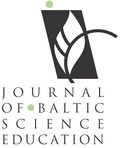PRIMARY SCHOOL STUDENTS’ DIFFICULTIES IN WRITING ARGUMENTS: IDENTIFYING CHALLENGES AND OPPORTUNITIES FOR SCIENCE TEACHING
| Title | PRIMARY SCHOOL STUDENTS’ DIFFICULTIES IN WRITING ARGUMENTS: IDENTIFYING CHALLENGES AND OPPORTUNITIES FOR SCIENCE TEACHING |
| Publication Type | Journal Article |
| Year of Publication | 2022 |
| Authors | Yamamoto, T, Kamiyama, S, Tanaka, T, Yamaguchi, E |
| Journal | Journal of Baltic Science Education |
| Volume | 21 |
| Issue | 3 |
| Start Page | 445-461 |
| Pagination | Continuous |
| Date Published | June/2022 |
| Type of Article | Original article |
| ISSN | 1648-3898 |
| Other Numbers | E-ISSN 2538-7138 |
| Keywords | difficulties in writing arguments, elementary/primary school, explanation construction, small-sample quantitative study |
| Abstract | In science education, the improvement in students’ ability to construct arguments at the primary school level has been reported. Although these studies have identified difficulties in arguments written by primary school students, they do not indicate areas that require improvement in teaching methods. This study aims to explore the possibility of improvement in early primary school students’ ability to construct arguments and identify the types of difficulties encountered. Sixty-seven Japanese third-grade students (9–10 years old) were taught to write arguments as specified by Zembal-Saul et al. (2012). The students were given two writing tasks before and after the lesson. To examine the students’ written arguments, each component of claim, evidence, and reasoning was scored based on a rubric. On comparing the scores of the pre-test and post-test writing tasks, it was found that 27 out of 67 students still had difficulty writing arguments during the post-test. An analysis of the students’ writing revealed four types of difficulties: ‘Incompleteness of components’, ‘Inappropriateness of components’, ‘Confusion between evidence and reasoning’, and ‘Confusion between claim and evidence’. This study offers insights pertaining to teaching implications and research recommendations. |
| URL | https://oaji.net/articles/2022/987-1656443883.pdf |
| DOI | 10.33225/jbse/22.21.445 |
| Refereed Designation | Refereed |
| Full Text |
